Have you ever found yourself asking, why does my dog stare at me? You’re not alone—many pet parents are baffled (and sometimes charmed) by the unwavering gaze of their furry friends. Is it love, curiosity, or something more? In this guide, we’ll decode the fascinating world of dog stare behavior, break down the potential meanings behind it, and help you understand your pup on a whole new level.
- Discover what motivates your dog's sustained gaze and the secrets behind their canine communication.
- Learn how to interpret different types of dog staring, from affection to potential health concerns.
- Explore the impact of your response: What should you do when your dog is staring at you?
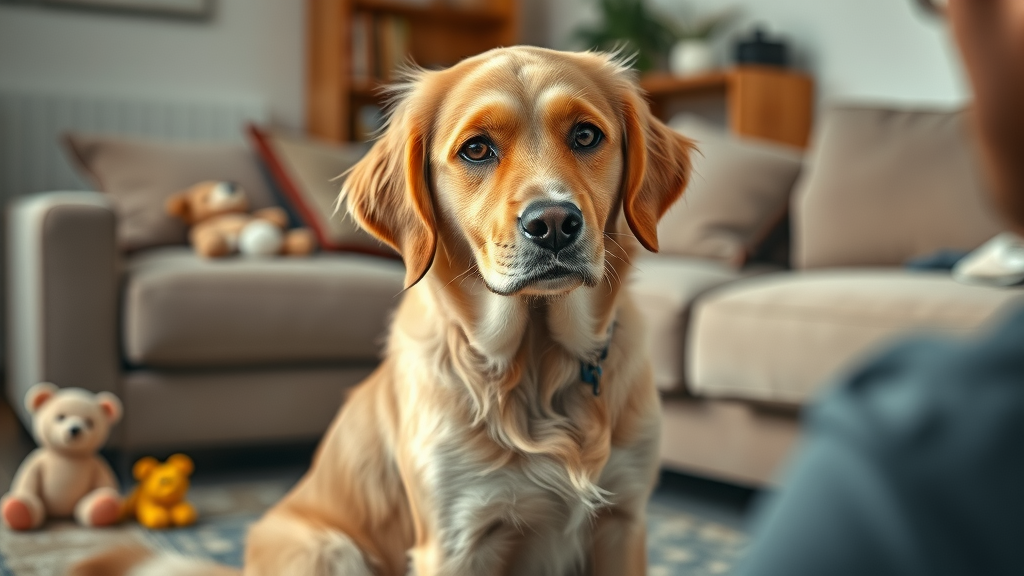
Unlocking the Reasons: why does my dog stare at me?—Understanding The Fascinating Dog Stare
One of the most frequently asked questions among dog owners is, “ Why does my dog stare at me? ” The answer isn’t as simple as you might think. A dog stare can mean many things—from deep love and trust, to curiosity, requests, or an alert for something out of the ordinary. Sometimes, your pup could be watching you to get your attention, waiting for a signal, or simply keeping an eye on you as a way of feeling secure. For pet parents, these moments of direct eye contact can feel intense, but they are rooted in the special bond between humans and dogs.
Understanding the body language and context around a dog stares is essential for reading what your companion is trying to say. For instance, a gentle gaze while wagging their tail often signals affection, while a hard stare combined with tense posture could mean your dog feels threatened or anxious. Decoding these subtle cues can not only help your training efforts but also deepen your emotional connection and ensure your dog's well-being. Next time your dog is staring , consider their facial expression, posture, and environment to better appreciate the conversation you’re sharing—even without words!
Decoding Dog Stare: why does my dog stare at me? Through Eye Contact and Body Language
Eye Contact From Dogs: Why Your Dog Stares at You
Direct eye contact between you and your pup is a powerful form of canine communication. While humans see eye contact as a sign of attention or honesty, dogs stare for a variety of reasons that reflect their emotional states and needs. Sometimes a loving gaze is all about bonding. Positive dog stares often come with a relaxed face and soft, blinking eyes—a clear sign that your dog trusts and adores you.
However, not all eye contact means affection. Depending on their body language and the context, a dog's stare could indicate anticipation, curiosity, or even a request for attention or food. Pet parents should pay special attention to the situation—whether it’s a quiet morning or playtime—when their dog stares to help interpret what their canine companion is communicating.
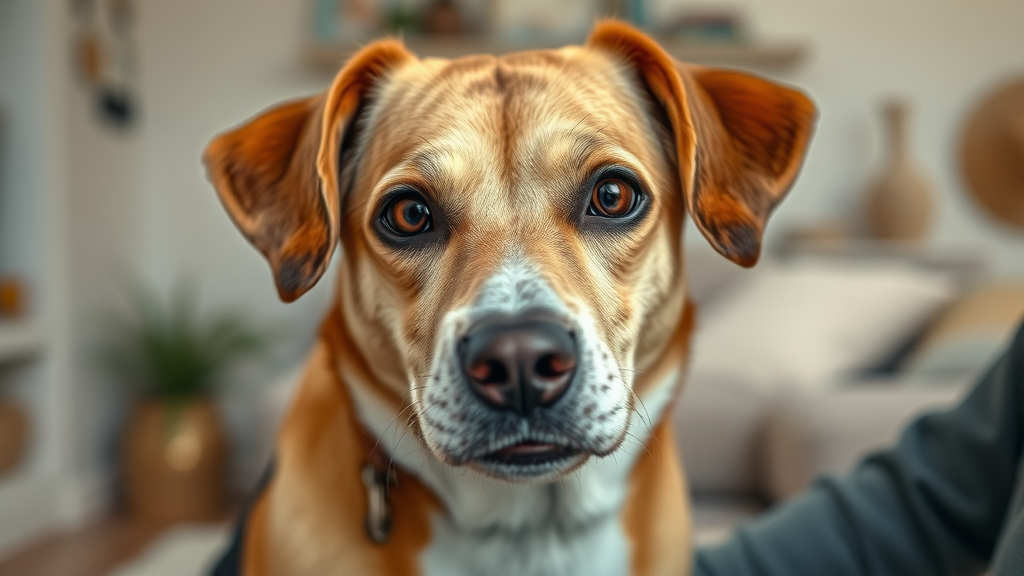
Body Language Accompanying Dog Stare
The meaning behind a dog staring episode becomes much clearer when you analyze their body language . A relaxed, wagging tail, floppy ears, and loose posture usually show that your pup feels safe, content, and friendly. This affectionate mode is most common when your dog is sitting beside you or gazing up to express love or gratitude. Many dog owners interpret this as an invitation to offer pets or simply to connect with their furry friend.
On the other hand, a stiff body or raised fur while the dog is staring may signal discomfort, stress, or arousal. Times dogs use a hard stare and tense muscles, it’s a prompt for pet parents to approach with caution or reassess what might be causing their dog to feel uneasy. Observing these non-verbal cues allows you to respond appropriately—whether it’s a cuddle or a relaxing diversion.
- Tail wagging, relaxed posture vs. stiff body as context to why your dog is staring.
Common Reasons Why Dogs Stare: Insights Into why does my dog stare at me?
Dogs stare for several very common reasons, each deeply tied to their instincts and emotional needs. As a pet parent, recognizing the underlying motivation can turn guesswork into genuine understanding. Some dogs are masters of using their eyes to get what they want, while others use direct eye contact to show emotion or curiosity. Let’s break down the most likely reasons why your dog stares at you:
- Affection and Bonding: Your dog could be gazing lovingly at you as an expression of trust and close connection. This type of loving gaze is usually paired with a soft expression and relaxed body language.
- Desire for Attention: Some dogs stare when they want your attention—whether it’s for a play session, a treat, or just a well-deserved belly rub. As a dog owner, acknowledging these requests with positive reinforcement strengthens your bond.
- Reading Human Emotions: Dogs are natural empaths. At times dogs will lock eyes to read your mood or emotional state, trying to determine if you’re happy, sad, or in need of comfort.
- Expecting Cues or Rewards: If you’ve been consistent with training, your dog may stare when waiting for you to give your dog a command, treat, or cue for their next move (like a walk or a potty break).
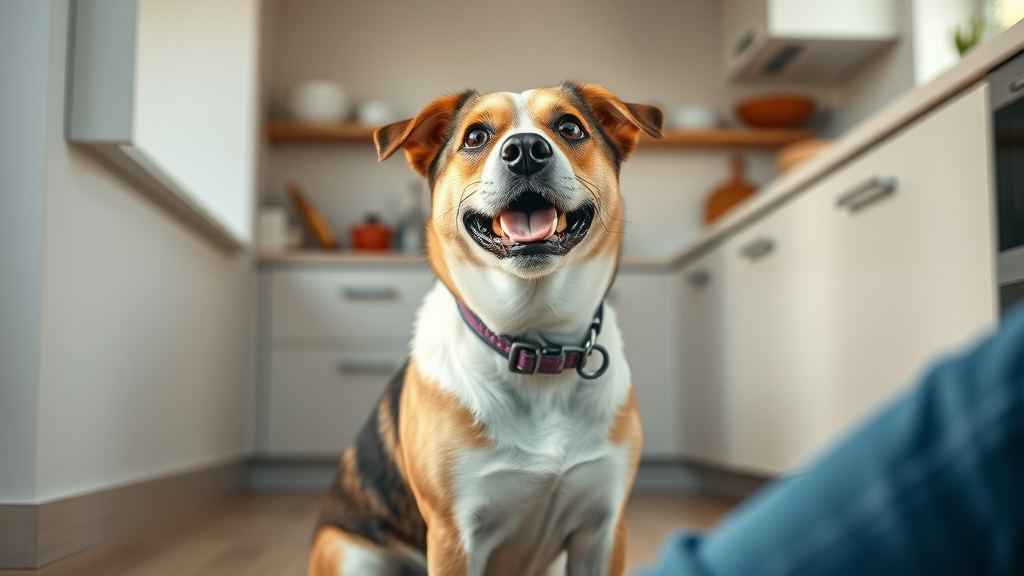
When Dog Staring Indicates Medical or Behavioral Issues: why does my dog stare at me?
Sometimes, a persistent or unusual dog staring can signal deeper health or behavioral issues. If you notice changes in the intensity, frequency, or emotional backdrop of your dog’s stare, it’s important to explore underlying causes. Dogs are amazing at masking illness, but a sudden increase in staring—especially with other symptoms—should not be ignored by pet parents.
Watch for additional signs, like confusion, lethargy, or anxious pacing. If your dog is staring more often than usual, especially without an obvious reason (like attention or wanting food), it’s wise to check for cognitive or emotional health issues.
Cognitive Dysfunction: Staring as a Sign of Underlying Health Concerns
In senior pups, excessive staring can be a symptom of canine cognitive dysfunction syndrome (CCDS). Similar to dementia in humans, cognitive dysfunction causes disorientation, confusion, and memory loss, making your dog more likely to get stuck staring into space or even at you. This syndrome is not rare; many older dogs undergo behavioral changes as part of aging.
If your dog is staring with a blank or confused look, becomes less responsive to your presence, or seems to forget routines, consult a veterinarian. Early detection and supportive treatment of cognitive dysfunction can help your beloved companion feel more comfortable and improve their quality of life.
- Explaining canine cognitive dysfunction syndrome (CCDS) and senior dog behavior changes.
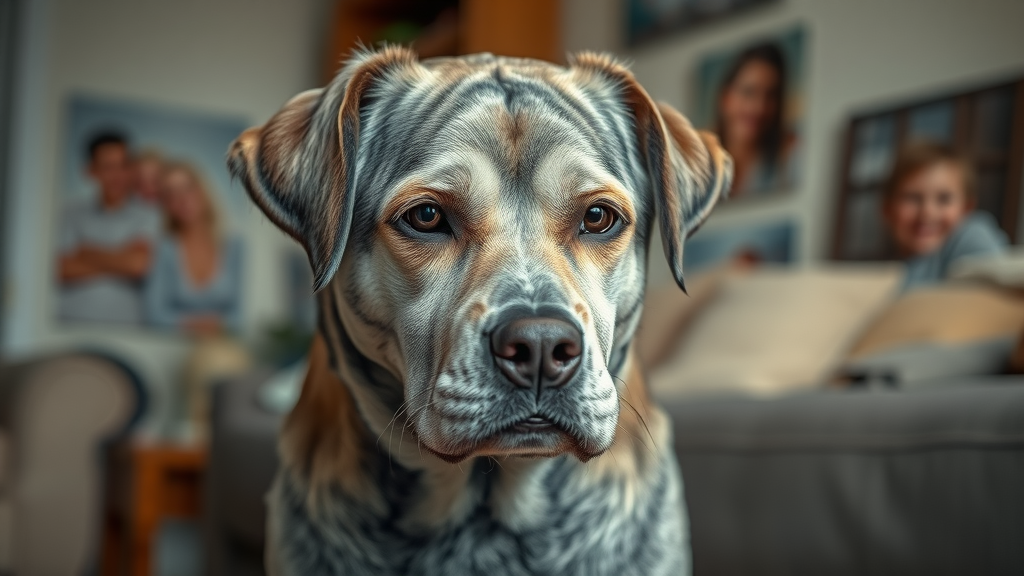
Anxiety, Stress, or Discomfort: When Dog Stares Mean More
A dog is staring in a tense setting, when guests visit, or during loud noises, could be showing signs of anxiety or distress. Anxiety-driven stares might be accompanied by pacing, whining, or a tucked tail. Unlike the loving gaze, these expressions are usually paired with clear discomfort and a longing for support from their pet parent.
If the dog staring becomes persistent alongside signs of discomfort, confusion, or pain, it’s crucial to consult your vet. Addressing these emotional or physical issues early on not only helps your dog feel safe but ensures a happier, healthier relationship.
- Staring related to pain, confusion, or distress—when to seek veterinary help.
How To Respond: The Best Approach When your dog is staring
Your response to your dog’s stare can shape both your bond and their behavior. Instead of ignoring or misreading their gaze, respond thoughtfully. Acknowledge a loving or affectionate dog stare with your own gentle eye contact, soothing words, or a calm touch. This simple act reinforces trust and strengthens your connection.
For anxious or nervous stares, use positive reinforcement—offer treats, enjoyable routines, or a comforting presence to help redirect their attention and relieve stress. Always observe your dog’s body language to make sure your response fits their emotional state. If you notice unexplained or excessive dog staring —especially if it comes with unusual behavior—consult your vet to rule out medical issues.
- Acknowledge affection with calm eye contact and gentle voice.
- Redirect anxious staring with treats, training, or comforting routines.
- Consult your vet for lingering, unexplained stares or changes in body language.
Why Dogs Stare in Training and Everyday Life: Role of the Dog Trainer
In training sessions, a dog trainer recognizes the importance of a focused dog stare . When a dog stares at their owner or trainer, it’s usually a sign of attention, readiness to learn, or anticipation of their next task. Direct eye contact is often encouraged during obedience or trick training, as it shows the dog is tuned in and eager to follow cues.
Whether you’re asking your dog to sit or teaching a fun new trick, paying attention to their eye contact and body language helps you adjust your technique for better results. Dog training that uses positive reinforcement when your pet makes eye contact encourages confidence, trust, and communication.
Training Focus: Dog stares as a sign of attention in obedience and tricks
A dog stare is often a very positive behavior in the context of obedience training. When working with a dog trainer, you’ll notice that rewarding direct eye contact creates a feedback loop—dogs learn that watching their handler results in praise, treats, or fun activities. This kind of mutual attention is crucial for effective training and deepening your pup’s focus.
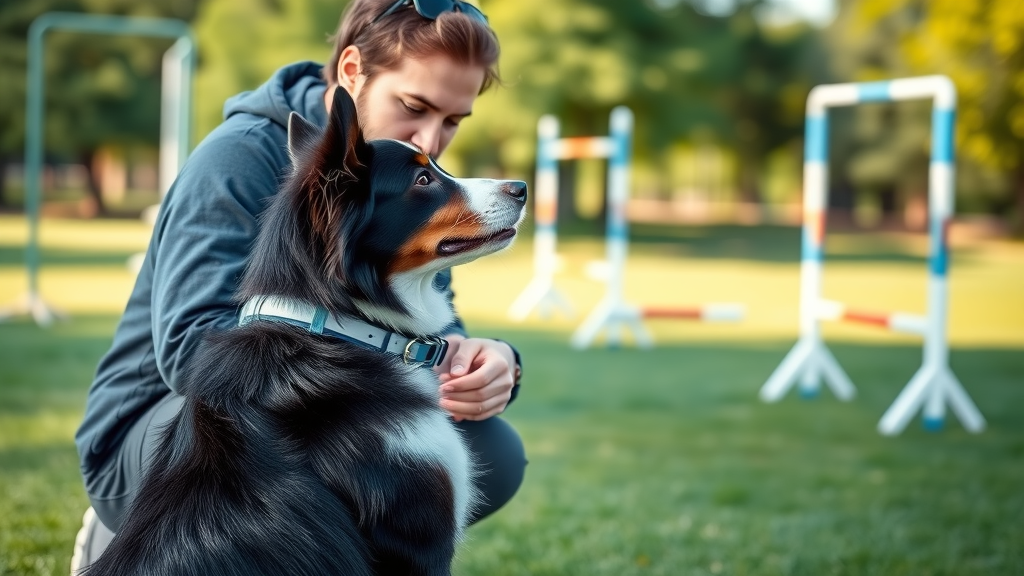
Communication: Dogs stare to read and respond to your commands.
Dogs are incredibly in tune with human nonverbal signals. In everyday life and during training, dogs stare to read and interpret your cues—whether it’s a hand gesture, voice inflection, or facial expression. By keeping an eye on you, your dog is looking for instructions and trying to understand how best to please you.
This shared stare-and-response dynamic is the foundation of teamwork between humans and dogs. The more you pay attention to the subtle cues, the easier it is to communicate and reinforce positive behaviors, making training and daily routines more enjoyable for both pet parent and pup.
| Stare Type | Typical Body Language | What To Do |
|---|---|---|
| Affectionate Gaze | Soft eyes, relaxed body, tail wag | Respond with gentle eye contact, petting, and soothing talk |
| Anticipatory Stare (Attention/Food) | Bright eyes, alert ears, wagging or still tail | Give appropriate cues, offer reward if desired behavior is shown |
| Anxious Staring | Tense muscles, tucked tail, wide eyes | Comfort your dog, remove stressor, consult vet if persistent |
| Confused Staring (Cognitive Dysfunction) | Blank expression, slow responses, disorientation | Monitor behavior, consult your veterinarian |
| Aggressive Staring | Hard stare, stiff body, raised hackles | Avoid direct eye contact, keep safe distance, seek professional help |
Recognizing When Dog Staring Might Be a Sign of Aggression
While most dog stares are harmless or affectionate, occasional episodes may indicate a sign of aggression . Differentiating between a loving gaze and a warning is crucial for your safety and your dog’s emotional health. Aggressive stares tend to come with a fixed, unblinking gaze, hard stare, and tense muscles—often with raised hackles or a forward stance.
When you see these signs, give your dog space and avoid direct eye contact , as they could interpret it as a challenge. Respect their boundaries, and, if aggressive staring persists, seek advice from a qualified dog trainer or veterinary behaviorist.
Sign of Aggression: How to Differentiate Between Affectionate and Aggressive Stares
- Indicators including intense eye contact, tense posture, raised hackles
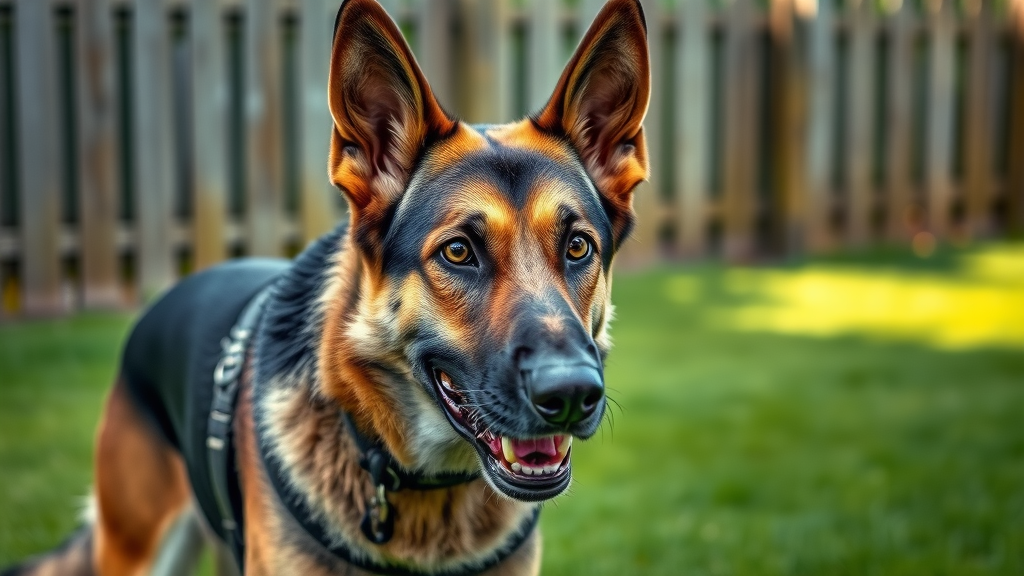
"A dog's stare can reflect trust, curiosity, or a request for connection—deciphering their gaze bridges the bond between human and canine." – Certified Dog Trainer
People Also Ask: why does my dog stare at me?
Should I stare back when my dog stares at me?
Gentle eye contact with your dog can strengthen your bond and convey affection. However, avoid holding a prolonged or intense gaze, as some dogs may interpret this as a threat. Always watch your dog's body language for comfort cues before returning their stare.
- Expert recommendation: Gentle eye contact can foster bonding but prolonged, intense staring might be perceived as a threat by dogs. Always consider your dog’s body language and comfort.
How do you tell if your dog is bonded to you?
A bonded dog will often stare at their owner softly, maintain physical closeness, and become excited when you come home. Relaxed body posture, soft tail wag, and a loving gaze are clear signals that your dog trusts you deeply and enjoys your company.
- Bonded dogs display relaxed staring, maintain physical closeness, and show excitement upon your return. A trusting dog’s stare is soft with a relaxed posture and gentle wagging tail.
What does it mean when your dog stares at you intently?
When your dog gives you an intense or "hard stare," it might mean they're requesting your attention, awaiting a cue, or feeling uneasy. Evaluate the context—if the stare comes with relaxed posture, it’s usually friendly. If paired with tense muscles, investigate further for underlying stress or discomfort.
- Intense staring could signal they want your attention, are awaiting cues, or are experiencing discomfort. Assess their overall body language to discern the reason.
What does it mean if my dog just keeps staring at me?
Persistent, unbroken dog staring could point to confusion, anticipation of something (like food or a walk), or even a medical concern like cognitive dysfunction. If the behavior is new or combined with other worrying signs, consult your veterinarian for guidance.
- Continuous, unbroken staring could mean confusion (possible cognitive dysfunction), anticipation of something, or health concerns. Consult your veterinarian for persistent unexplained staring.
Frequently Asked Questions on why does my dog stare at me?
- Can dogs use staring to manipulate humans? – Some dogs learn that staring gets them attention or treats, making it a clever way to communicate needs or desires.
- Is dog staring different among breeds or ages? – Yes, certain breeds are more expressive or attentive. Also, aging dogs may stare more due to cognitive dysfunction or sensory loss.
- When is dog staring something to worry about? – If your dog's stare comes with odd behaviors, confusion, or anxiety, consult your vet to rule out health or behavioral issues.
Key Takeaways: Understanding why does my dog stare at me?
- Most dog staring is harmless, rooted in affection and communication.
- Changes in staring habits, combined with anxious or odd behavior, may need veterinary attention.
- Learning your dog’s body language and context is key to a healthy, responsive relationship.
Deepen Your Bond by Learning More About Dog Communication and why does my dog stare at me?
Want to become fluent in your dog’s unique language? Keep learning, stay observant, and embrace every glance—they’re windows into your pup’s heart and mind!
Conclusion
Respond with empathy, continue to observe your pup’s cues, and reach out to a professional if ever unsure—your attention is the key to a happy, healthy bond with your furry friend.
Understanding why your dog stares at you can deepen the bond between you and your furry friend. The article “Why Does My Dog Stare At Me? Better Understand Dogs’ Staring Behavior” from the American Kennel Club explains that dogs often stare to gain information about their environment, seeking cues from their owners about what might happen next, such as anticipating a walk or mealtime. ( akc.org ) Similarly, Purina’s article “Why Does My Dog Stare at Me: Top 8 Reasons” highlights that mutual gazing between dogs and their owners can release oxytocin, the “love hormone,” strengthening the emotional connection. ( purina.co.uk ) If you’re eager to understand your dog’s behavior better, these resources offer valuable insights into the motivations behind your dog’s gaze.
 Add Row
Add Row  Add
Add 


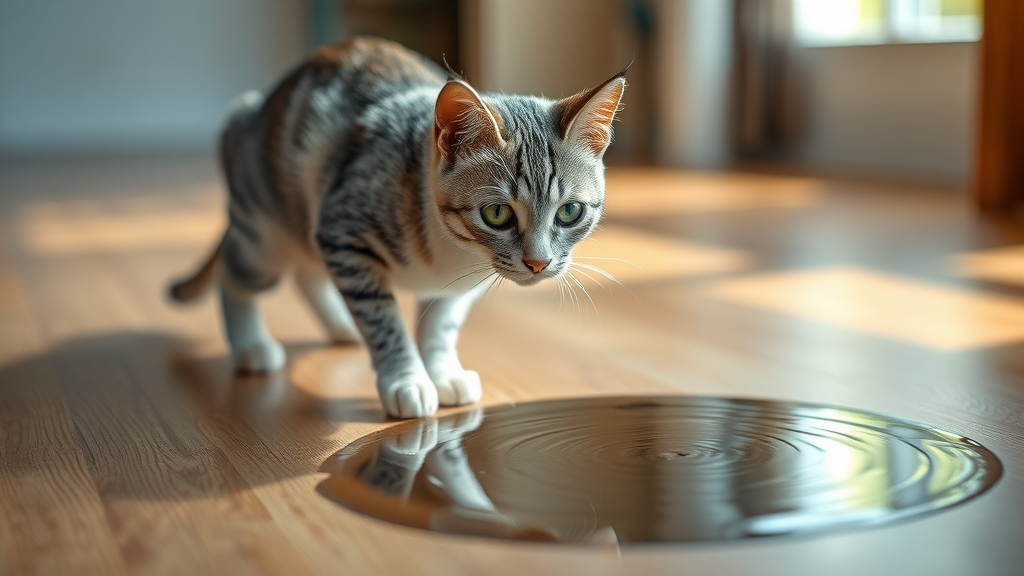
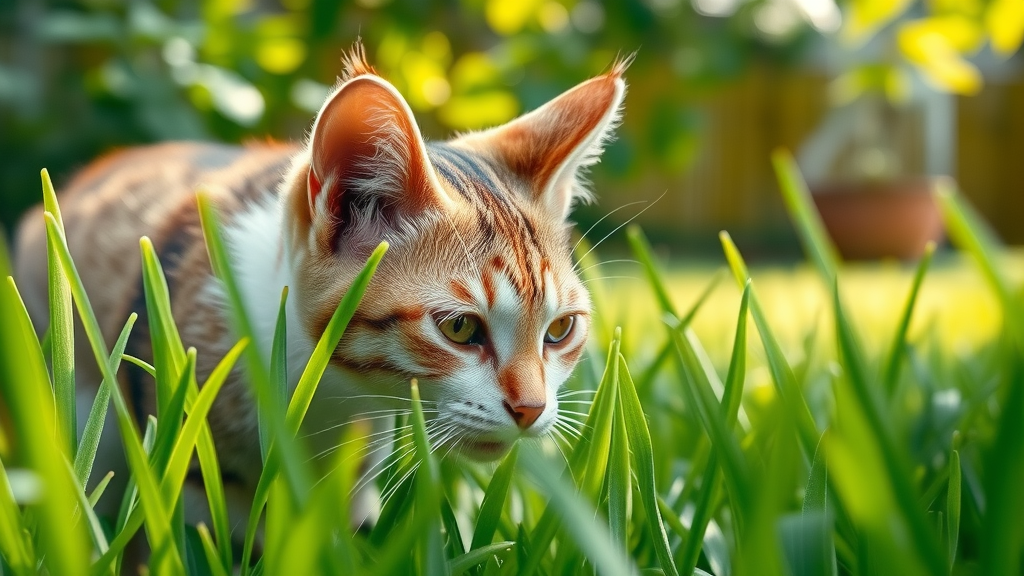
Write A Comment